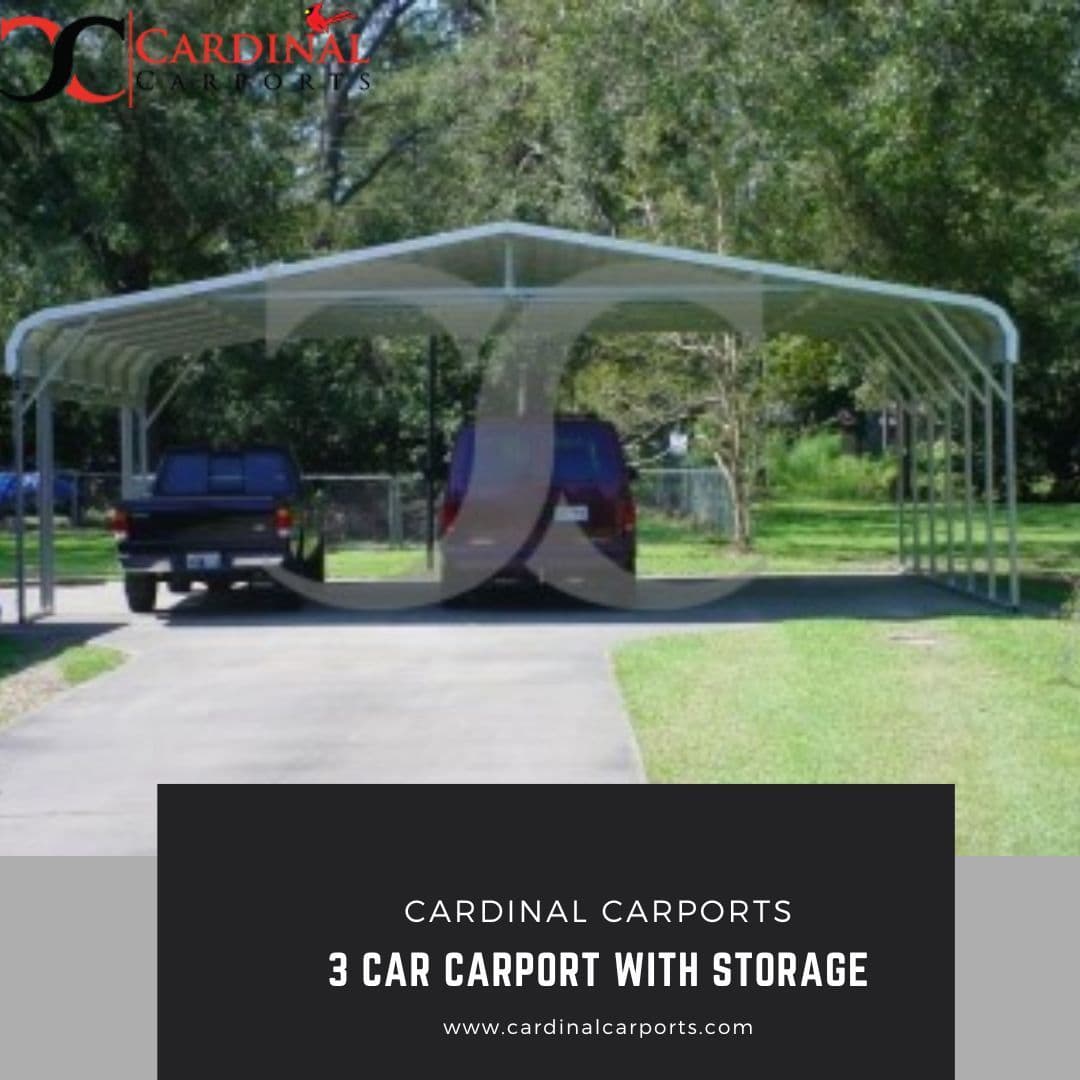
3 Car Garage Dimensions: A Complete Guide
When planning to build a garage for your vehicles, it's crucial to consider the dimensions to ensure it can accommodate your needs. A 3-car garage is a popular choice among homeowners who own multiple vehicles or require extra space for storage.
This guide will explore the optimal dimensions for a 3-car garage, considering various factors such as vehicle size, storage requirements, and practicality.
1: Width
The width of a 3-carport with storage depends on whether you want to park the side of the car by the side or in tandem. For side-by-side parking, a minimum width of 26 feet is recommended.
This allows each parking space to be approximately 8-9 feet wide, providing enough room to open doors and maneuver between the vehicles.
However, a width of 32 feet or more is advisable if you prefer tandem parking. Tandem parking involves parking one vehicle behind the other, maximizing the use of space.
2: Length
The length of a 3-car garage should accommodate the average length of vehicles you intend to park. A standard sedan is 15 to 17 feet long, while larger vehicles, such as SUVs or trucks, can range from 18 to 22 feet.
Considering this, 20 to 25 feet is recommended to provide ample space for parking and maneuvering. You may opt for a lengthier garage if you have longer vehicles or desire additional storage space.
3: Height
The height of a 3-car garage is crucial for accommodating taller vehicles, such as vans or trucks, and ensuring sufficient clearance.
A minimum height of 8 feet is commonly recommended, but if you plan to store recreational vehicles or use a car lift, a height of 10 to 12 feet is preferable. This allows for overhead clearance and provides flexibility for future needs.
4: Additional Space
In addition to parking your vehicles, single metal carports often serve as a multipurpose space for storage, workshops, or hobbies. It's essential to consider the extra space required for these activities.
Allocate a minimum of 4 to 6 feet of additional width on one side of the garage for storage shelves, workbenches, or cabinets. This space allows easy access to tools, equipment, and other stored items without interfering with the parked vehicles.
5: Door Placement
When planning the layout of your 3-car garage, carefully consider the placement of doors. Ideally, each parking space should have a garage door for independent access. This way, you won't need to move one car to access another.
If you opt for tandem parking, a single wide door at the front or back of the garage is sufficient. Remember to account for the space required for the doors to open fully without hitting adjacent vehicles or walls.
6: Consider Future Needs
While planning the dimensions of your 3-car garage, it's wise to consider any potential future needs. Will you need additional storage space or want to convert part of the garage into a workshop? If so, allocating more square footage is advisable to accommodate these future expansions.
Planning for such changes during the initial construction phase is easier and more cost-effective than making modifications later on.
7: Local Building Codes
Before finalizing your garage dimensions, it's essential to consult local building codes and regulations. Different municipalities may have specific requirements regarding setbacks, maximum building sizes, and other considerations. Compliance with these regulations ensures your garage is built safely and legally.
How Big Is A Three-Car Garage? Write 300 Words For It?
A three-car garage is a spacious structure designed to accommodate three vehicles. Its dimensions can vary based on individual preferences and local building codes.
However, a standard three-car garage typically ranges from 22 feet to 32 feet in width and 20 feet to 30 feet long, providing ample space for parking three average-sized cars side by side or in tandem.
A three-car garage usually has three parking spaces approximately 8 to 9 feet wide each for side-by-side parking. This width allows for comfortable entry and exit from the vehicles and allows for maneuverability within the garage. With this setup, the overall width of the garage would be around 26 to 27 feet.
On the other hand, if you prefer tandem parking, where one car is parked behind the other, a three-car garage would typically have two parking spaces in tandem and one space on the side.
In this configuration, the width of the garage can range from 32 to 36 feet, allowing for more space for maneuvering and additional storage areas along the sides.
Regarding length, a three-car garage usually has a length of 20 to 25 feet, accommodating the average length of most vehicles. This length provides sufficient parking space and allows some room to move around the vehicles comfortably.
It's important to note that these dimensions are general guidelines and can be adjusted based on individual needs and preferences. If you own larger vehicles or want additional space for storage or workshops, you can increase the garage's width, length, or height accordingly.
Before constructing a three-car garage, it's crucial to consult local building codes and regulations to ensure compliance. Building codes may vary by location and could dictate certain setback requirements, maximum building sizes, and other considerations to ensure safety and adherence to local standards.
Final Version
In conclusion, designing a 3-car garage requires careful consideration of various factors. The width, length, and height must be appropriate for the vehicles you own or plan to own.
Appreciate the creator